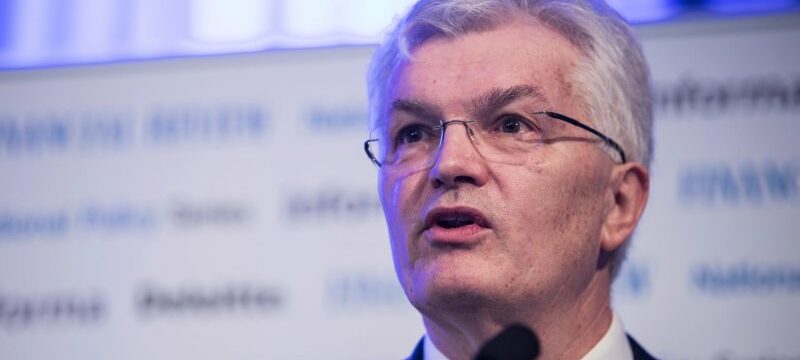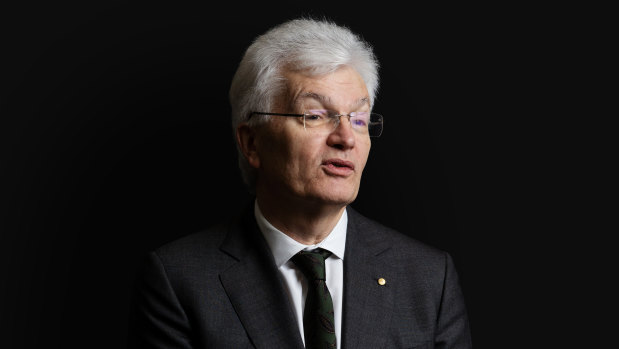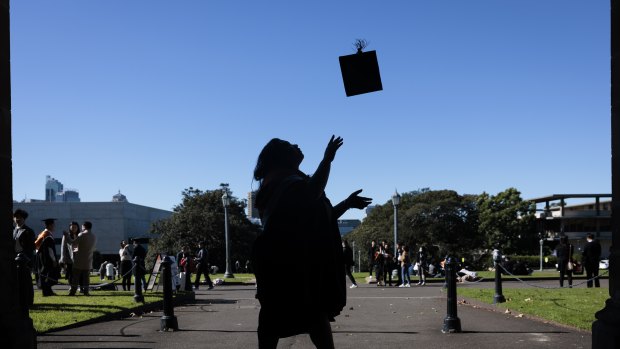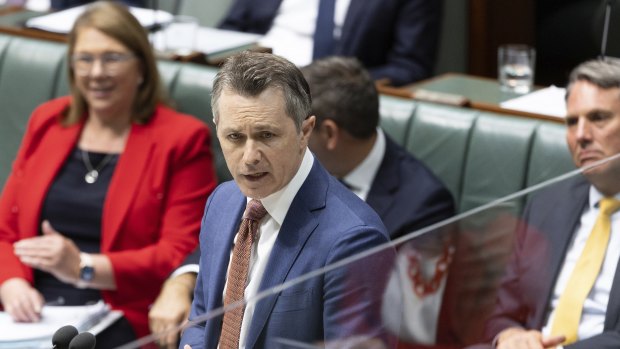Save articles for later
Add articles to your saved list and come back to them any time.
The nation’s top bureaucrat has floated the prospect of local universities teaching degrees in foreign languages as stretched tertiary institutions prepare for another wave of new students.
Glyn Davis, the former University of Melbourne vice-chancellor who now leads the Department of Prime Minister and Cabinet, is calling for transformative thinking to fulfil the varying needs of an estimated 100,000 enrolments over the next seven years, spurred by the easing of pandemic rules.
Secretary of the Department of Prime Minister and Cabinet Glyn Davis.Credit: Alex Ellinghausen
Australia’s top universities have more students and were growing much more quickly than their international counterparts, he said, which could lead to the creation of new tertiary institutions.
“We’ve got the largest public universities, probably, in the Western world, and that’s a shock, that’s not what many of us think,” he said, adding the University of Sydney’s enrolments doubled in the same period as Oxford University’s had grown by just 20 per cent.
“If you take the five largest Group of Eight universities, they are four times larger than their UK equivalents, and two times larger than their US equivalents.”
“This is astonishing – there’s no other system in the world that has these characteristics.”
International student enrolments have rebounded since the pandemic restrictions eased.Credit: Brook Mitchell
Davis pushed back against what he described as the arrogant assumption that English would become the dominant language in our region.
He argued it could be beneficial if some students were taught in foreign languages, whether it be at institutions that taught only in a different language such as Mandarin, or universities that offered degrees in other languages.
“I can’t see any good reason why you wouldn’t consider that,” he said at an event to promote a new book, Australian Universities: A conversation about public good.
“What can we do that’s different? How can we integrate vocational and higher education? How can we have different patterns? Why do we always have to teach in English?”
Education Minister Jason Clare has instituted a review into higher education.Credit: Alex Ellinghausen
“We’ve got a choice: we can add 100,000 to our [existing universities] and just go on doing what we’ve done … or we can say, we did something really interesting in the 1960s and ’70s, we created new and different institutions, maybe it’s time to have that conversation again.”
At the same time as student enrolments have soared – including by 1700 per cent among international students over the past three decades – public funding has fallen.
“Australia has funded higher education by pushing the cost onto students, in particular … international students, and the generous families of Shanghai,” Davis said in a reference to the vast number of Chinese students in Australia.
He dampened expectations that Australian universities could bridge the funding shortfall by raising more money through donations from alumni and philanthropists, a common practice across the Western world that is particularly prevalent in the US.
At Princeton University, Davis explained that a full-fee paying student contributed about 20 per cent of the cost of providing their degrees, with the rest funded partly by philanthropic contributions.
“That’s such a fundamental difference in the funding that when Australians talk about wanting to emulate the Ivy League … we are so far from [having the required level of philanthropy],” he said.
Cut through the noise of federal politics with news, views and expert analysis from Jacqueline Maley. Subscribers can sign up to our weekly Inside Politics newsletter here.
Most Viewed in Politics
From our partners
Source: Read Full Article



